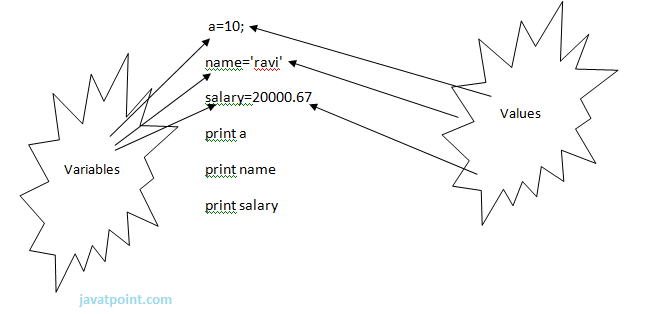|
91-9990449935 0120-4256464 |
Python VariablesVariable is a name of the memory location where data is stored. Once a variable is stored that means a space is allocated in memory. Assigning values to Variable:We need not to declare explicitly variable in Python. When we assign any value to the variable that variable is declared automatically. The assignment is done using the equal (=) operator. Eg: 
Output: >>> 10 ravi 20000.67 >>> Multiple Assignment:Multiple assignment can be done in Python at a time. There are two ways to assign values in Python: 1. Assigning single value to multiple variables: Eg: x=y=z=50 print x print y print z Output: >>> 50 50 50 >>> 2.Assigning multiple values to multiple variables: Eg: a,b,c=5,10,15 print a print b print c Output: >>> 5 10 15 >>> The values will be assigned in the order in which variables appears. Basic Fundamentals:This section contains the basic fundamentals of Python like : i)Tokens and their types. ii) Comments a)Tokens:
There are following tokens in Python:
Tuples:
Eg:
>>> tuple=('rahul',100,60.4,'deepak')
>>> tuple1=('sanjay',10)
>>> tuple
('rahul', 100, 60.4, 'deepak')
>>> tuple[2:]
(60.4, 'deepak')
>>> tuple1[0]
'sanjay'
>>> tuple+tuple1
('rahul', 100, 60.4, 'deepak', 'sanjay', 10)
>>>
Dictionary:
Eg:
>>> dictionary={'name':'charlie','id':100,'dept':'it'}
>>> dictionary
{'dept': 'it', 'name': 'charlie', 'id': 100}
>>> dictionary.keys()
['dept', 'name', 'id']
>>> dictionary.values()
['it', 'charlie', 100]
>>>
Next TopicPython keywords
|













